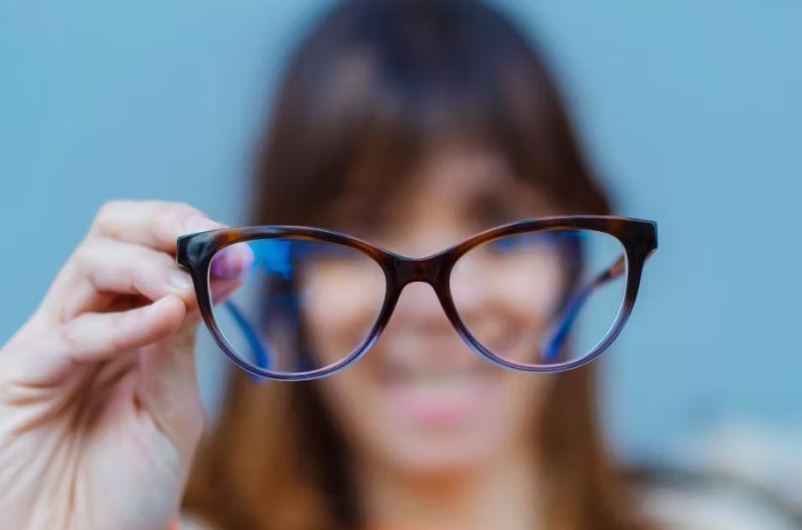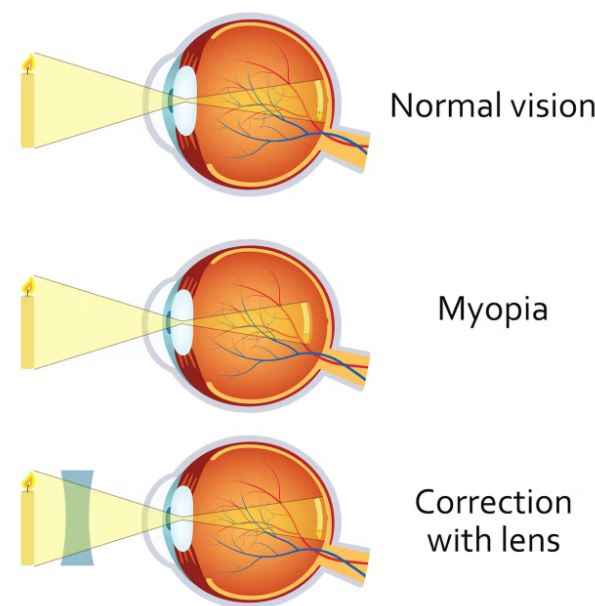8 Types of Myopia: Causes, Symptoms, and Treatment

Myopia is an eye disorder characterized by problems focusing on distant objects. Let’s see how this pathology is classified according to its causes and its severity. Myopia is an alteration in the refraction process of the eye, the image is formed before reaching the retina, which means that objects that are located far away cannot be perceived well and are blurred.
The types of myopia are classified according to the cause, linked to alteration of different ocular structures, such as the cornea, the lens of the eyeball, or according to the severity of the condition. We consider it simple if the diopters do not reach 6, that is, it is less serious, instead we will say that it is Magna if they exceed 6 diopters and it is linked to ocular pathology.
Treatment can also vary depending on the characteristics of the disorder or the subject. Simple myopia can be corrected with glasses, contact lenses, or surgery. For its part, high myopia will need continuous control of the state of alteration to prevent it from leading to more serious conditions and to be able to treat related eye pathologies.
In this article, we will talk about myopia, what it is, what types of myopia exist, what their main characteristics are, their causes, symptoms, and possible treatments.
What is Myopia?
Myopia is an eye condition that is caused by an alteration in the process of refracting light on the retina. When the eye functions normally, the perceived image is focused on the retina, while in subjects with myopia, it is focused earlier. This variation in refraction appears when the object we are looking at is far away, the individual will see it blurred.
There are different levels of affectation, and different graduations, making the subject seem more or less blurry. In the same way, each eye is independent, which means that one of them may have myopia and the other may not. Although the most common is that if one shows refraction problems the other also has, and the degree can vary.
We can differentiate different types of myopia that will show different characteristics while maintaining the essential features of the condition. Thus we will differentiate according to the cause and according to the degree of alteration.

8 Different Types of Myopia, Causes, and Symptoms
-
Congenital Myopia
As its name indicates, congenital myopia is observed in children from birth, it shows genetic causes linked to a pathology of the mother or the premature birth of the baby. The causes are related to structural problems of the eye and usually show serious alterations although they do not tend to worsen.
-
Axial Myopia
Axial-type myopia occurs when the eyeball is longer than normal, more than 24 millimeters. The eyeball is more oval, which means that the image does not refract on the retina and is projected earlier.
-
Curvature Myopia
Curvature myopia is related to an increase in the curvature of the cornea, which is a transparent layer that covers the iris, the pupil, and the anterior or lens chamber, which is a lens located between the iris and the vitreous humor. Both structures allow the refraction of the image. The increase in curvature is therefore linked to refraction of the image before reaching the retina.
-
Index Myopia
The appearance of index myopia is related to an increase in the diopter power of the lens, linked to the ability to modify the curvature that this structure of the eye shows to adjust and focus the image. This process is known as accommodation. Thus, if the power is increased, the curvature will increase, making it difficult to focus and producing a blurred vision of distant objects.
-
Mixed Myopia
In the case of mixed myopia, more than one structural affectation of those mentioned above is observed.
-
False Myopia
False myopia, as we can deduce, is not truly considered myopia, since it does not observe structural alteration. As we have already said, structures such as the lens allow the image to focus thanks to its variation in curvature, a process known as accommodation.
Well, in false myopia the problem is linked to alteration in accommodation, we observe that the lens continues to be tense, and contracted when looking at distant objects. In this way, blurred vision will be shown due to the difficulty of relaxing the ocular muscles and the consequent greater curvature.
Usually, the causes of this transient focusing difficulty are exposure to low light conditions or excess accommodation linked to trauma or diseases that affect the entire body such as diabetes. Since the distinction is linked to the alteration or not of the internal structures of the eye, it is difficult to differentiate between false myopia and a true one.
A characteristic that can indicate it to us is a great variation of diopters, either an increase or decrease, in a short period. Likewise, if with the administration of cycloplegic drops we see that the problem decreases or disappears, it is highly likely to be linked to false myopia.
-
Normal Myopia
Simple myopia is the most frequent and is normally related to a diopter degree of less than 6. In other words, it is less serious and is linked to a lower probability of showing ocular pathologies concerning other types of myopia, but it does present a higher risk of complications when compared to the normal population. It usually begins before the age of 5, increases during adolescence, and stabilizes after 18 or 20 years.
Being shown from such an early age, children may always remember having seen poorly, therefore for them the blurred vision of distant stimuli will be normal. They may use strategies to try to improve vision, such as squinting to achieve focus or getting closer to the target to reduce the distance and not see it from afar.
Likewise, this type of myopia cannot be prevented, although if we remain attentive to possible indicators already mentioned that children may show, we can request an eye exam and correct it with the most appropriate treatment, either with glasses, contact lenses, or refractive surgery, as long as the diopters are already stable, you have the appropriate prescription to intervene, you are over 18 years old and you have good eye health.
There are two types of refractive surgery: laser, which as the name indicates, the intervention consists of the use of a laser that impacts the cornea to recover the ability to focus, and intraocular surgery, which consists of implanting a phakic intraocular lens, placing it inside the eye, between the iris and the lens and remaining indefinitely, performing the function of correcting the refractive problems associated with myopia.
-
Magna Myopia
Magna myopia or high myopia is less frequent and shows a greater alteration than simple myopia, with more than 6 diopters and produced by an abnormal increase in the length of the eyeball greater than 26 millimeters. It is hereditary, is seen more frequently in women, and usually begins in childhood, usually before the age of 10. It is common for an increase in alteration to occur over the years.
As we have mentioned, it is more serious than simple myopia, thus being linked to eye diseases such as early cataracts; glaucoma, a condition that damages the optic nerve; retinal detachment; or alterations in the macula, which is the center of the retina, sensitive to light.
Individuals with high myopia may report vision loss and perceive straight lines as wavy. Given its consideration as eye disease and the possibility of progressing to a greater condition, it is necessary to carry out periodic check-ups with the ophthalmologist to prevent greater future alterations.
If high myopia worsens, it is considered pathological or degenerative myopia. In this case, apart from the typical alterations of high myopia, we observe changes in the retina and a narrowing of the sclera, which is an outer layer that protects the eye from possible damage from the environment and helps maintain eye pressure. The symptoms of this myopia are low vision or even blindness. It is currently one of the main causes of blindness worldwide and its prevalence has increased.
The severity and pathologies linked to high myopia and the possibility of leading to more serious alterations mean that, as we have said, it is essential to carry out routine checks to verify that the situation does not worsen and thus be able to act early. The treatment that is carried out will be the one linked to the pathology with which it shows a relationship, such as cataracts.
See More: Difference Between Dizziness and Vertigo
Follow Top and Trending on Google News and receive the latest alerts and the main news about apps, technology, beauty, entertainment, and all the top 10 related posts.
